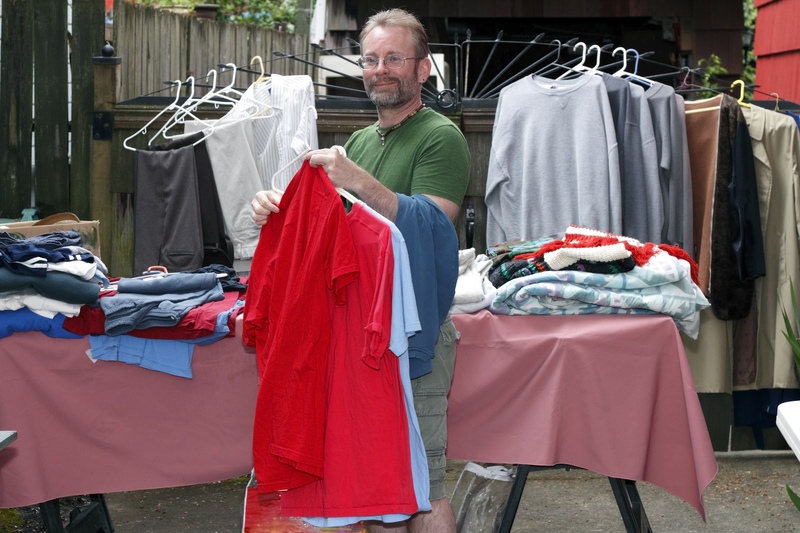Simple Recycling Methods for Home
Posted on 04/02/2025
Recycling is an essential practice that contributes significantly to environmental sustainability. With growing concerns about climate change and waste management, individuals can play a crucial role by adopting simple recycling methods at home. This article delves into various straightforward and effective recycling practices that can help reduce waste, conserve natural resources, and promote a healthier planet.
Understanding the Importance of Recycling
Before diving into specific methods, it is vital to comprehend why recycling is essential. Recycling helps in:
- Reducing landfill waste: By reusing materials, the volume of garbage sent to landfills decreases, mitigating overflow and pollution.
- Conserving resources: Recycling materials like paper, glass, and metals reduces the need for raw materials, preserving natural resources.
- Saving energy: Manufacturing products from recycled materials typically requires less energy compared to producing new items from raw materials.
- Mitigating climate change: Recycling reduces greenhouse gas emissions by minimizing the need for energy-intensive production processes.
- Fostering sustainability: It promotes a circular economy, where resources are continuously reused, ultimately leading to a sustainable environment.

Simple Household Recycling Methods
Implementing recycling practices does not have to be complicated. Here are some simple methods to get started:
1. Segregation of Waste
Segregating waste is the first and most crucial step in recycling:
- Dry waste: Includes items like paper, plastic, glass, and metals. Store them separately from wet waste.
- Wet waste: Comprises organic materials like food scraps and garden waste. Composting is an effective way to recycle wet waste.
- Hazardous waste: Includes items like batteries, electronic waste (e-waste), and chemicals. These should be disposed of at designated collection centers.
2. Composting
Composting is an excellent method to recycle organic waste and produce nutrient-rich soil for gardening:
- Set up a compost bin: Choose a suitable spot for your compost bin or pile. Ensure it is aerated and has good drainage.
- Add organic waste: Include fruit and vegetable peels, coffee grounds, eggshells, leaves, and grass clippings. Avoid adding meat, dairy products, and oily foods, as they can attract pests.
- Maintain the compost: Turn the compost regularly to aerate it and speed up decomposition. Keep it moist but not waterlogged.
3. Recycling Paper
Paper is one of the most commonly recycled materials. Here are some tips for effective paper recycling:
- Collect paper: Keep a separate bin for paper waste like newspapers, magazines, office paper, and cardboard.
- Flatten cardboard: Flatten cardboard boxes to save space and ensure they are free from food residues.
- Avoid contamination: Do not include greasy or soiled paper, as it can contaminate the recycling process.
Recycling Plastics
Plastic recycling can be more challenging due to the variety of plastics used in products. However, it is crucial due to the environmental hazards posed by plastic waste. Here are some steps to recycle plastics:
1. Identify Recyclable Plastics
Not all plastics are recyclable. Check the recycling symbols on plastic items, usually marked with numbers 1 to 7. Plastics labeled with numbers 1 and 2 (like PET and HDPE) are commonly recycled.
2. Clean and Sort Plastics
Rinse plastic containers to remove residues. Sort them according to the recycling symbols to ensure they are properly processed.
3. Reuse and Repurpose
Before recycling, consider reusing or repurposing plastic items. For instance, plastic bottles can be turned into plant pots or storage containers.
Glass Recycling
Glass is a highly recyclable material. Here's how to manage glass recycling at home:
1. Separate by Color
Glass is usually sorted by color (clear, green, and brown) at recycling centers. Keep different colored glass items separate to facilitate recycling.
2. Clean and Remove Lids
Rinse glass containers to remove food residues and remove any caps or lids, as they are typically made of non-recyclable materials.
3. Handle with Care
Broken glass can be hazardous. Carefully wrap it in newspaper or a plastic bag before disposing of it in the recycling bin.
Recycling Metals
Metals, including aluminum and steel, are valuable materials that can be recycled repeatedly without losing quality. Here are some tips for recycling metals:
1. Collect and Clean
Collect metal items such as cans, foil, and old tools. Clean them to remove food or chemical residues.
2. Crush Cans
Crush aluminum cans to save space and make them easier to transport.
3. Separate Different Metals
Keep different types of metals separate. For instance, aluminum cans should be stored separately from steel cans.
Recycling Electronic Waste (E-Waste)
Electronic waste contains valuable materials but also hazardous substances. Proper e-waste recycling is essential:
1. Donate or Resell Working Electronics
If your electronic device is still functional, consider donating it to someone in need or selling it. This extends the life of the product and reduces waste.
2. Use Designated E-Waste Collection Centers
Take unusable electronics to designated e-waste collection centers. Many electronic retailers and municipalities offer e-waste recycling programs.
3. Remove Personal Data
Before recycling, ensure that personal data is securely erased from devices like computers and smartphones.

Additional Tips for Home Recycling
Incorporate the following additional practices to enhance your home recycling efforts:
1. Educate and Involve Family Members
Educate everyone in your household about the importance of recycling and how to correctly segregate waste. Make it a collective effort.
2. Use Reusable Bags and Containers
Minimize single-use plastics by opting for reusable shopping bags, containers, and water bottles.
3. Limit Use of Disposable Products
Avoid disposable items like paper plates and plastic utensils. Instead, use durable and washable alternatives.
4. Participate in Community Recycling Programs
Engage with local recycling programs and initiatives. They often provide resources and support for better recycling practices.
Conclusion
Recycling at home is a simple yet impactful way to contribute to environmental conservation. By practicing waste segregation, composting, and proper recycling of paper, plastics, glass, metals, and electronic waste, households can significantly reduce their environmental footprint. Involving family members and participating in community programs further amplifies these efforts, paving the way for a cleaner and more sustainable planet. Start recycling today and be a part of the solution to global waste challenges.


 020 3744 5548
020 3744 5548












